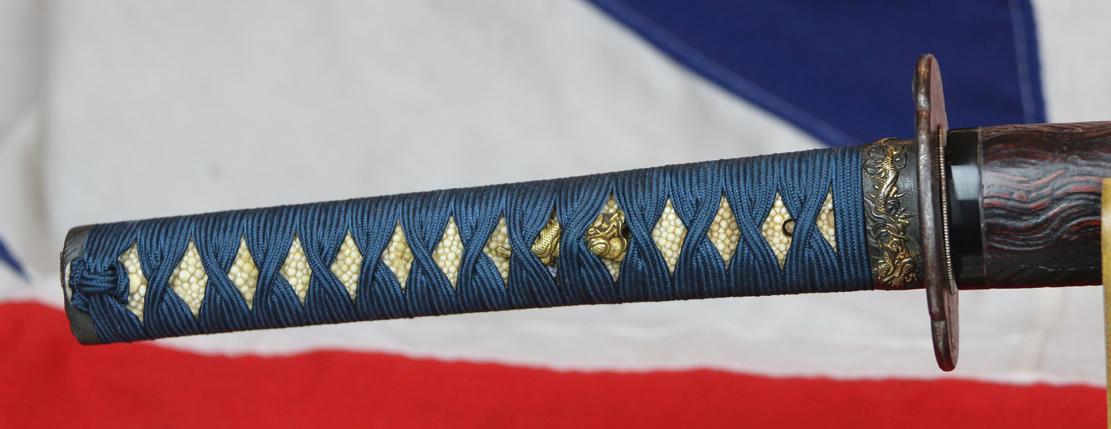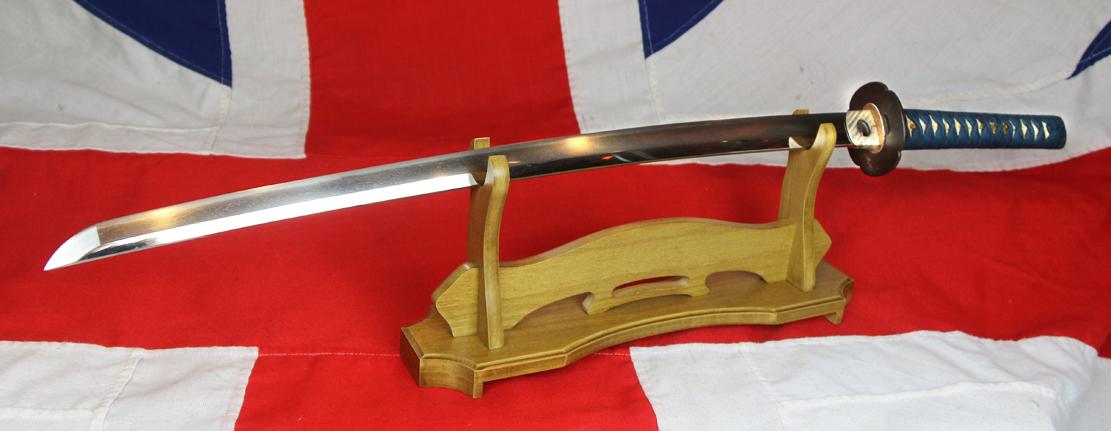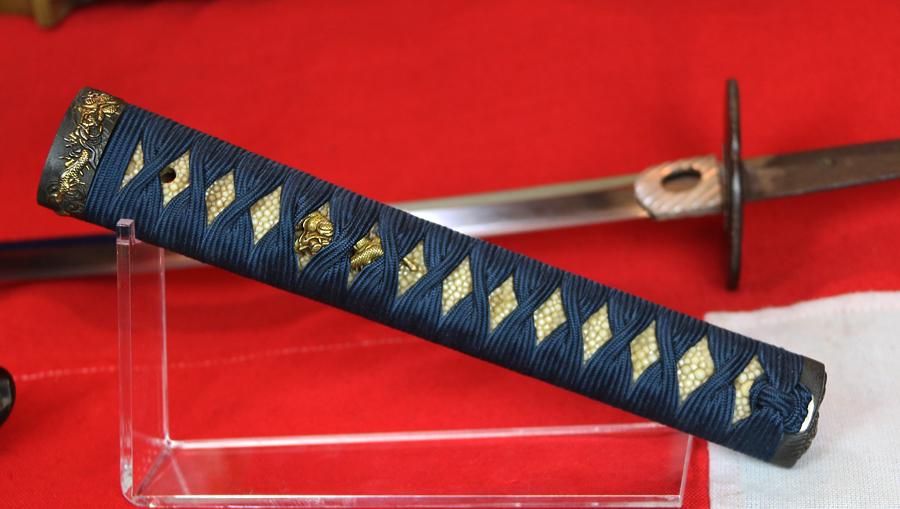RESERVED A Fabulous & Most Beautiful Museum Quality Koto Samurai Katana Circa 500 Years Old
With signally fine all original Edo period koshirae mounts of shakudo and pure gold, based on the dragon and birds, pure gold decorated menuki under the blue silk wrap over giant ray skin. A stunning deeply carved two colour lacquer saya and red and black. The koto blade has a superb suguha hamon with nishiji hada. Shakudo nanako and pure gold fuchi-gashira. In 1600, after a long period of conflict among rival daimyo, the victorious Tokugawa Shogun discouraged armed civil warfare, maintained the samurai's traditional status, so internecine warfare continued unabated. The sword and the horse remained symbols of their power.
By the time Ieyasu Tokugawa unified Japan under his rule at the Battle of Sekigahara in 1600, only samurai were permitted to wear the sword. A samurai was recognized by his carrying the feared daisho, the big sword, little sword of the warrior. These were the battle katana, the big sword, and the wakizashi, the little sword. The name katana derives from two old Japanese written characters or symbols: kata, meaning side, and na, or edge. Thus a katana is a single-edged sword that has had few rivals in the annals of war, either in the East or the West. Because the sword was the main battle weapon of Japan's knightly man-at-arms (although spears and bows were also carried), an entire martial art grew up around learning how to use it. This was kenjutsu, the art of sword fighting, or kendo in its modern, non-warlike incarnation. The importance of studying kenjutsu and the other martial arts such as kyujutsu, the art of the bow, was so critical to the samurai a very real matter of life or death that Miyamoto Musashi, most renowned of all swordsmen, warned in his classic The Book of Five Rings: The science of martial arts for warriors requires construction of various weapons and understanding the properties of the weapons. A member of a warrior family who does not learn to use weapons and understand the specific advantages of each weapon would seem to be somewhat uncultivated. European knights and Japanese samurai have some interesting similarities. Both groups rode horses and wore armour. Both came from a wealthy upper class. And both were trained to follow strict codes of moral behaviour. In Europe, these ideals were called chivalry; the samurai code was called Bushido, "the way of the warrior." The rules of chivalry and Bushido both emphasize honour, self-control, loyalty, bravery, and military training. blade 25.5 inches, overall in saya 36 inches long. It is important to bear in mind, that due to the revered status that Japanese swords achieve for most of their working lives in Japan, that the condition they survive in can be simply remarkable. One can see just how remarkable it can be, by comparing the condition of this fine sword that was made around the same time as the early Tudor period of King Henry the VIIIth to any equivalent aged, surviving, early Tudor period sword, from any country outside of Japan, and that comparison will show just how fine any Japanese sword’s state of preservation, from the same era, truly can be.
Code: 23568










